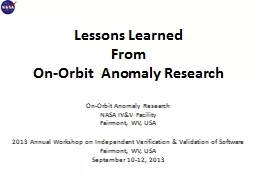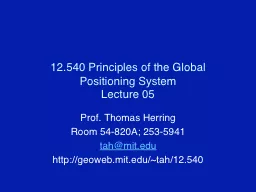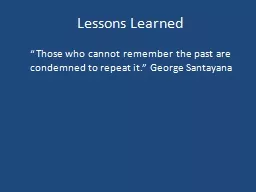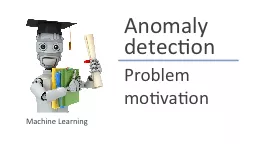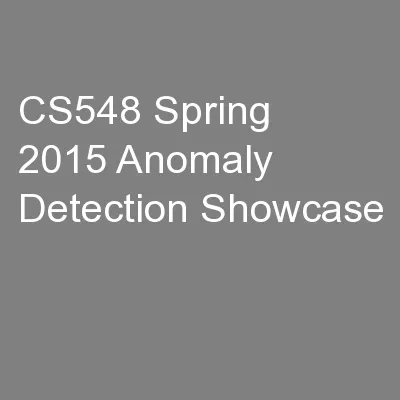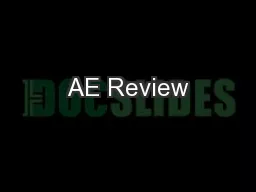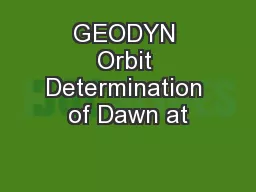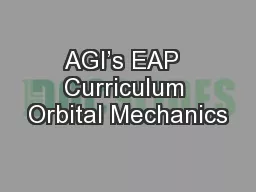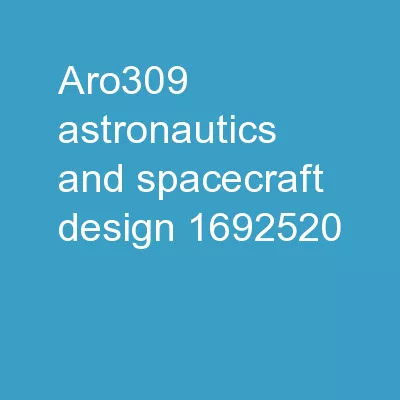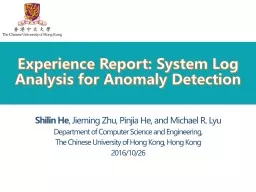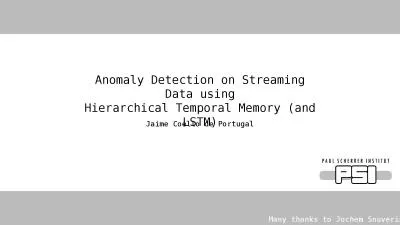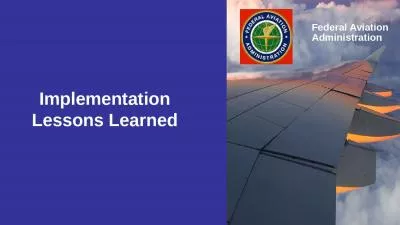PPT-Lessons Learned From On-Orbit Anomaly Research
Author : min-jolicoeur | Published Date : 2018-10-29
OnOrbit Anomaly Research NASA IVampV Facility Fairmont WV USA 2013 Annual Workshop on Independent Verification amp Validation of Software Fairmont WV USA September
Presentation Embed Code
Download Presentation
Download Presentation The PPT/PDF document "Lessons Learned From On-Orbit Anomaly R..." is the property of its rightful owner. Permission is granted to download and print the materials on this website for personal, non-commercial use only, and to display it on your personal computer provided you do not modify the materials and that you retain all copyright notices contained in the materials. By downloading content from our website, you accept the terms of this agreement.
Lessons Learned From On-Orbit Anomaly Research: Transcript
Download Rules Of Document
"Lessons Learned From On-Orbit Anomaly Research"The content belongs to its owner. You may download and print it for personal use, without modification, and keep all copyright notices. By downloading, you agree to these terms.
Related Documents

